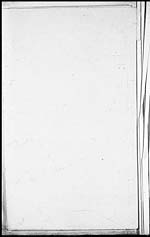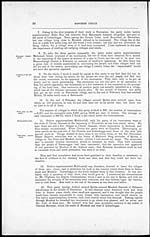Medicine - Vaccination > 1869-1873 - Report on vaccination in the Province of Bengal > Report on vaccination in the Province of Bengal for the year ending 31st March 1873
(421) [Page 29]
Download files
Individual page:
Thumbnail gallery: Grid view | List view
![(76) [Page 29] -](https://deriv.nls.uk/dcn17/9153/91535885.17.jpg)
Sixth annual report of the Ranchee Circle of Vaccination for the year 1872-73,—
By SURGEON J. J. WOOD, M. B., Superintendent.
Establishment.
Number and per-
centage of success
of operations.
The same establishment of three head vaccinators and twenty vaccinators was employed.
The year's work consisted of 36,518 cases, of which 35,206 were successful, giving a
percentage of 97.77. The cost of each successful case was 5 annas 6/10 pie. The correspond-
ing numbers for the previous season (1871-72) were 35,650 cases, and 34,664 successful
cases, or 98.38 per cent., while each successful case cost 4 annas 7 7/10 pie.
The non-working
season
2. The non-working season.—During April and August no operations were performed.
Thirteen cases were done in Hazareebaugh and ten in the Singbhoom district. The rest of
the returns are from Lohardugga and its sub-division Palamow. In Maunbhoom there were
no vaccinations. Altogether 525 cases were got, of which 379 were successful; the unsuc-
cessful and doubtful together numbered 129, and the result was unknown in 17. Thus, 74.63
per cent. were successful.
The working season
Plan lard down.
3. The working season.—In accordance with the first of the principles laid down by
the Inspector-General of Hospitals in his report upon vaccination for the year ending
31st March 1871, a definite area was selected before the working season began. This seemed
a suitable one in many ways, and, as may be seen on the map, extends north-west from
the ground taken up last season. It embraces the thannah of Baloomath, which is conter-
minous with pergunnah Toree. The boundary between Toree and the thannahs of Choria
and Lohardugga, which lie, respectively, to the south-east and south, is marked by the
steep northern edge of the Chota Nagpore plateau. Like most of the surface of the plateau
above, Toree has, on the whole, a gentle southerly slope; about its centre and towards the
west hills abound, which render camping impossible. On the north and east the boundary
is Hazareebaugh district, and on the west sub-division Palamow. The pergunnah consists
chiefly of jungle and rock, cultivation is scanty in scattered villages; the census returns,
giving 81 persons per square mile, and the bulk of the people, are low-caste Hindoos.
Toree.
4. The remark applied to Palamow in paragraph 13 of last year's report was applicable
to Toree as well, and considerable difficulty was anticipated, but its boundaries were well
defined : two capital roads traverse it at right angles, crossing at Chandwa, and it lies next
that hot-bed of small-pox—Palamow sub-division.
5. In addition to Toree, I intended to get as much of Munkah thannah (in Palamow)
done as possible, so as to give a footing in the sub-division, and to finish Choria and Lohar-
dugga, both nearly done, and Horambe, well begun last year. Two vaccinators, whom I
thought I could trust by themselves, were placed in Ranchee thannah, which was left half
finished at the end of last season.
In Baloomath thannah it was decided to start vaccination from two centres,—Baloomath
in the north, and Chandwa in the south.
Beginning of the
season
6. Beginning of the season.—The vaccinators were divided into three parties as
usual.
Two parties began work at Chandwa, one on each side of the Chuttra and Lohar-
dugga road, which runs from north to south through the pergunnah. First, the party of
four vaccinators, under native superintendent Mahomed Ishak, took the east side of the
road in the beginning of November, and in the end of the month Native superintendent
Mukhunlall came with another party of six vaccinators, and took position on the west side.
Some villages in the north of Choria thannah were done by this party on their way from
Ranchee. The third party, under native superintendent, Elahi Bux, was placed at Ba-
loomath village. He had been employed there in the hot weather of 1871, and formed
a favourable opinion of the ground, in which opinion, however, I did not agree with him.
Opposition offered.
On trying to get work, objection, or rather opposition, was encountered from some of
the zemindars, whose minds seem usually to govern the minds of the ryots, but it was gra-
dually overcome, in several instances, on the arrival of my camp. One point was attained
in the early vaccination of Toreenuggur, in the middle of the pergunnah, a village held
sacred by the Hindoos, who worship at a hill-top shrine of 'Mahadeo' close by.
8
Set display mode to: Large image | Zoom image | Transcription
Images and transcriptions on this page, including medium image downloads, may be used under the Creative Commons Attribution 4.0 International Licence unless otherwise stated. ![]()
| India Papers > Medicine - Vaccination > Report on vaccination in the Province of Bengal > Report on vaccination in the Province of Bengal for the year ending 31st March 1873 > (421) [Page 29] |
|---|
| Permanent URL | https://digital.nls.uk/91535883 |
|---|
| Additional NLS resources: | |
|---|---|




